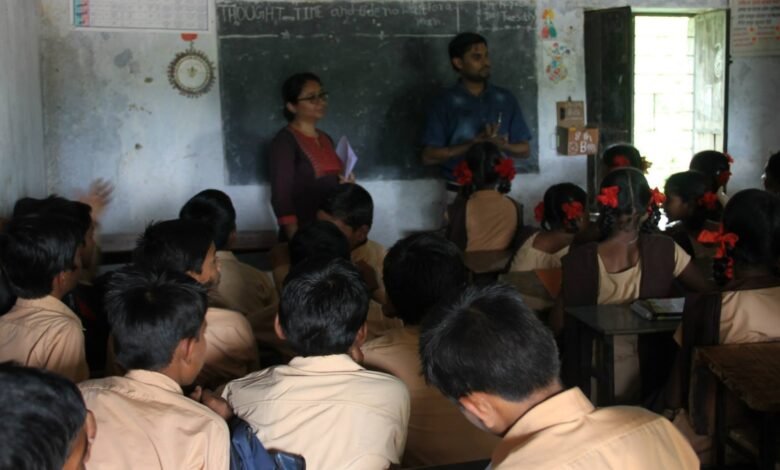ASER 2023 Reveals Alarming Education Crisis in Rural India
ASER 2023 report illustrates a dismal trend: More than 56% of students in rural India, aged between 14 and 18, cannot perform basic arithmetic.

The latest Annual Status of Education Report (ASER) 2023 has revealed an alarming situation. The survey, aimed to analyse the educational abilities, enrollment and aspirations of children in rural India, ended up discovering how India’s rural youth struggle with basic maths and everyday calculations and are incompetent at reading from even sub-standard regional language textbooks. The report is based on a survey carried across 28 districts (from 26 states) by a civil society organisation called ‘Pratham’ after interviewing 34,745 school-going rural children between the ages of 14 and 18.
Some positive findings of the report:
The survey discovered how more rural children were getting enrolled for secondary education and that their parents had been dissolving their savings to send their children to school in the post-pandemic world! The report illustrated how 96% of the surveyed rural youth (aged 14 years) were enrolled in some sort of educational institution.
Though there are some positive findings in the ACER 2023 report, the range of problems and sub-standard quality of education imparted through government-aided schools overshadows the data of increasing school enrolment in rural India!
What are the findings of the report alarming?
After surveying the rural youth (14 to 18 year olds), Pratham observed:
- More than half of the surveyed students (56%) failed to divide a three-digit number with a one-digit number — requires a Standard III to IV level understanding of mathematics.
- A quarter of the surveyed students could not decipher Standard II regional language textbooks.
- Less than half (42%) could read an easy sentence in English, of which less than one-fourth could explain the sentence’s meaning.
- 40% of the surveyed students could not measure with a scale or tell the time from a clock.
- 45% of the students could not calculate the duration of how long they slept.
The questions asked to these students were not based on Olympiad standards but on the rudimentary level of understanding (Standard III, IV of education). The discovery by this survey becomes all the more unnerving when we realise that these students shall soon be expected to contribute to India’s GDP and play their role in pushing India to the third-largest economy in the world.
Waste of India’s demographic dividend?
The average age of an Indian is only 29 years, and we have the largest demographic dividend in the world. A demographic dividend is the portion of the population between the ages of 16 and 64 — who are the most productive component of a given demography. Across the world, trends suggest that countries with higher demographic dividends have higher national income and growth. However, despite having a surplus labour force, India does not compare well when ‘quality of labour’ is taken into question.
The recent ASER report of 2023 begs us to introspect and question whether the tax-funded welfare schemes dedicated to empowering the rural youth are making any difference on the ground level. Even if the government tries to introduce vocational education and skill training programs to increase the employability of the rural youth — these students would not be able to upgrade themselves owing to the dearth of their ‘basic education.’
If school-going children of rural India are incapable of executing even rudimentary arithmetic problems, how will they protect themselves from wage and labour exploitation? If they are not versed even in their regional language, how shall they avail of the government’s welfare schemes?
Suggestions put forward by ASER:
The ASER observed via its findings that students in rural India, after a certain age, were expected to participate in household chores and earn livelihood for their families. Hence, absenteeism was a recurring phenomenon in the government-aided schools of rural India.
ASER suggests that the government should make education ‘easily accessible’ and ‘flexible’ via smartphones and internet connectivity. They also highlighted the necessity of upgrading school infrastructure and incentivising education to lure children into classrooms and actively participate in the class curriculum. The government must ensure that India’s labour force does not become redundant even before it gets employed.
Today, China has emerged as a global manufacturing hub because of their expenditure on skill development and vocational education. Thus, India’s road to a five trillion economy passes through skill development and increasing labour quality — not just sheer demographic dividend or labour quantity.







